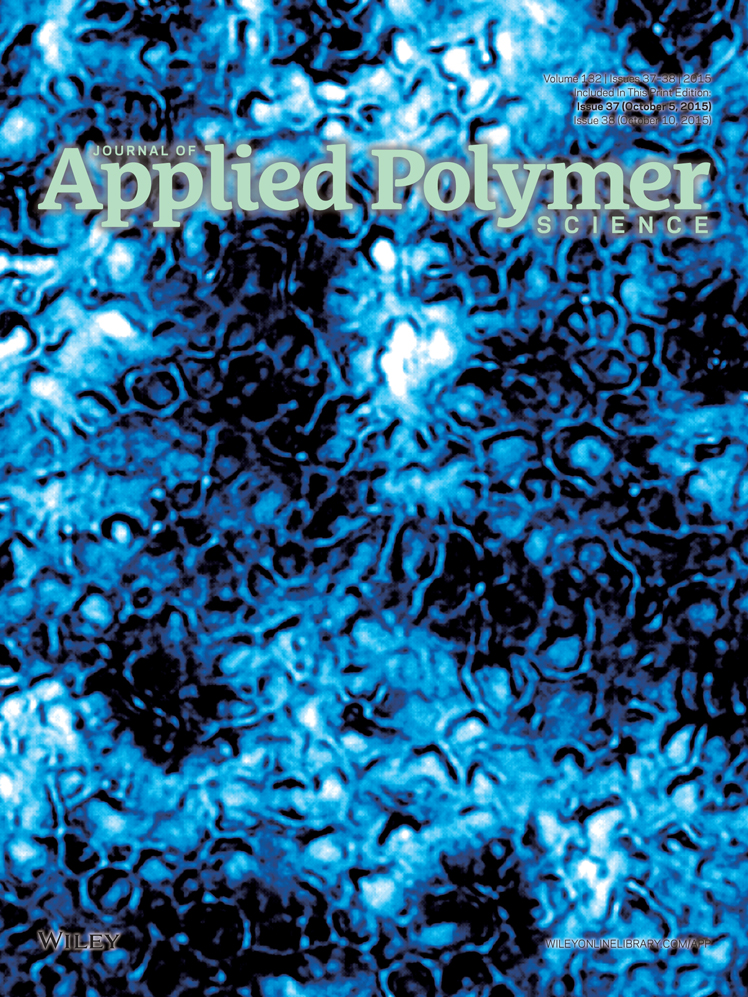Role of acrylic acid in the synthesis of core-shell fluorine-containing polyacrylate latex with spherical and plum blossom-like morphology
ABSTRACT
The core-shell fluorine-containing polyacrylate latex was successfully synthesized by two-stage semicontinuous emulsion copolymerization of methyl methacrylate (MMA), butylacrylate (BA), acrylic acid (AA), and dodecafluoroheptyl methacrylate (DFMA). The fluorine-containing polyacrylate latex was characterized by Fourier transform infrared spectroscopy (FTIR), transmission electron microscopy (TEM), dynamic light scattering (DLS), zeta potential, thermal gravimetric analysis (TGA), differential scanning calorimetry (DSC). The effects of AA content on monomer conversion, polymerization stability, particle size, corsslinking degree, carboxyl groups distributions (latex surface, aqueous phase or buried in latex), as well as mechanical properties and water absorption rate of latex film were investigated. The obtained fluorine-containing polyacrylate latex exhibited core-shell structure with a particle size of 120–150 nm. The introduction of AA was beneficial for the increase of monomer conversion and the polymerization stability, and had little effects on the mechanical property of latex film. However, the hydrophilicity of AA made the water resistance of latex film get bad. With the increase of AA content, the carboxyl groups preferred to distribute on aqueous phase, and the possibility of homogeneous nucleation increased and more oligomers particles were formed. Moreover, the oligomers would distribute to the latex and continued to grow up, making the latex morphology changed from spherical to plum blossom-like. The core-shell latex had two Tg corresponding to the rubber polyacrylate core and hard fluorine-containing polyacrylate shell, and the latex film possessed excellent thermal stability. © 2015 Wiley Periodicals, Inc. J. Appl. Polym. Sci. 2015, 132, 42527.




